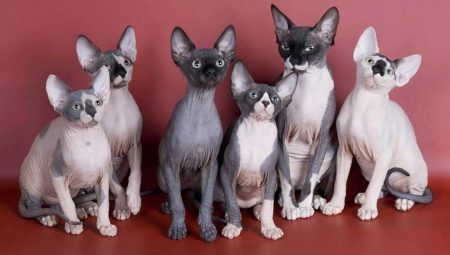Sphinxes are the most mysterious breed of cats, their appearance scares and causes interest at the same time. Just a few decades ago, they seemed to be inhabitants of other planets. Today this breed has gained wide popularity.
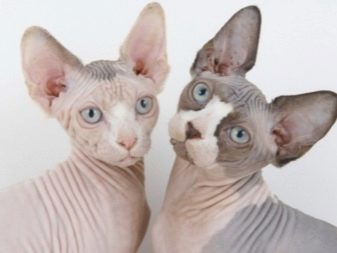
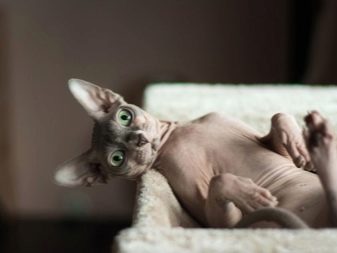
Breeding history
The origin of naked cats has its own history. Animals were born without wool at different times and in different nations. When the mutation occurred, a naked baby appeared in the litter of ordinary kittens. He was not considered something special, on the contrary, such kittens were rejected. But some nations supported the manifestation of mutations and raised naked cats. In history, cases of keeping bald animals by the Aztecs, Egyptians are noted. Unfortunately, these breeds have not reached our days.
Modern cats and cats, which we are used to seeing at exhibitions, belong to three types of sphinxes: Canadian, Don and St. Petersburg. The first breed of modern sphinxes was created by Canadians. Initially, there was an unsuccessful attempt in Ontario in 1966 when a normal kitten was born with an ordinary cat. In the future, the babies appeared weak, not resilient. In 1975, in the state of Minnesota, nature again presented a hairless cat, and a year later a cat. This unique pair became the progenitors of the entire Canadian breed.
Bald kittens, with grace and fantastic eyes resembled Egyptian statues, so they were given the name of the Sphinxes, they are called so throughout the world. In Russia, the name "Canadian" was added to the name "Sphinx" to distinguish them from two Russian breeds, which appeared a little later.
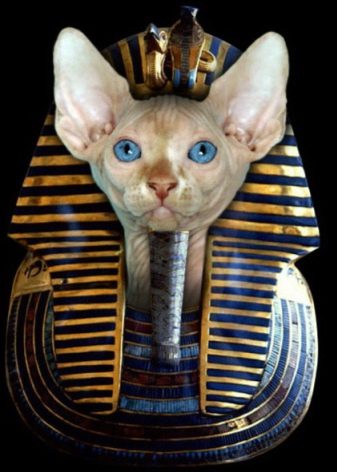
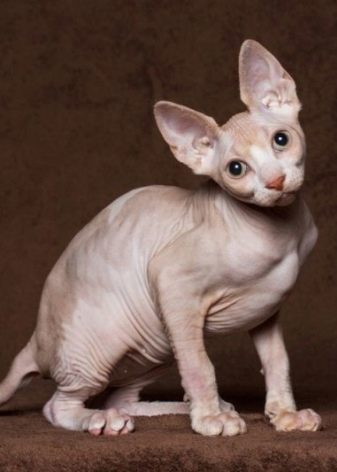
The Don Sphynx descended from the bald cat Varvara from Rostov-on-Don, a naked kitten was born in her in 1987.
In 1994, another breed of sphinxes was bred in St. Petersburg, which they began to call Peterbolds. The Don Sphynx and Oriental cats are taken as the basis of the species.
A mutation of the Canadian species of sphinxes was the result of a recessive alopecia gene. In the case of the Don breed, a dominant gene was present in animals.
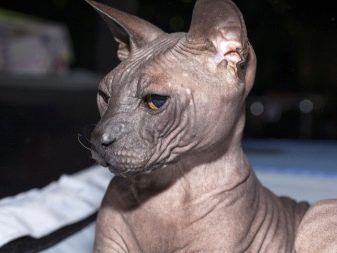
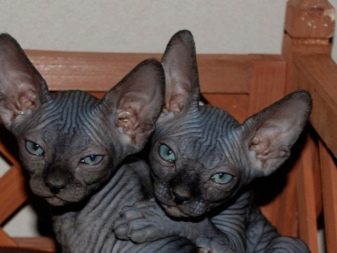
Advantages and disadvantages
Not only the appearance of the sphinxes causes a controversial opinion, there is debate about their health, nature, hygiene difficulties. Before you get such a pet, you should consider all the pros and cons associated with keeping these animals. Sphinxes are endowed with many virtues.
- This is still an elite breed. Its representatives have a unique exotic appearance.
- The positive aspects include partial hypoallergenicity. People who are allergic to cat hair may contain sphinxes, but overly sensitive individuals will still react to the salivary secretions and sweat of the animal.
- The absence of hair on the animal does not create problems with additional cleaning in the house.
- The sphinxes are benevolent in nature, they are not capricious.
- Animals are intelligent, easily trained, their abilities should be developed in the process of communication.
- Most representatives of this breed have good health.
- Good-natured sphinxes get along well with children and get along well with other pets.
- They are gentle, loyal and affectionate to the owners. By nature, these are active, playful and curious animals.
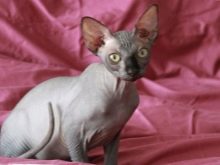
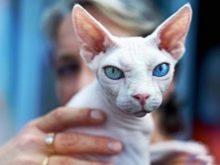
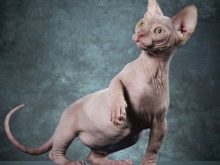
The disadvantages of the breed should also be noted:
- high cost of animals - from 200 to 1000 US dollars;
- they need special hygiene, skin and ear care;
- many do not like the brown sticky coating on the back;
- sometimes owners complain of a specific smell from pets;
- due to the lack of hair, animals are often cold and prone to diseases associated with hypothermia;
- the sphinx almost does not move away from the owner, not every person enjoys such excessive attachment.
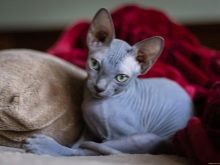
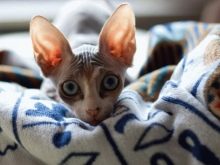
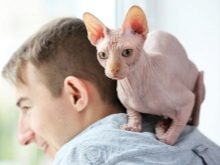
Description
Initially, the sphinxes were a mixture of basic breeds and animals with a mutation in the baldness gene. The new individual was the so-called mestizo, they tried to cross it with a similar animal, which was also a cross between a smooth-haired cat and a mutated hairless cat. So the breed of sphinxes was formed, which today has three types: Canadian, Don and St. Petersburg. The presence of various genetic failures caused by recessive and dominant genes, made their distinctive characteristics in the appearance of these animals.
As for the character, in addition to differences, similar qualities are seen in all species - this is goodwill, affection for the owners and excellent mental abilities.
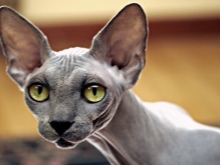

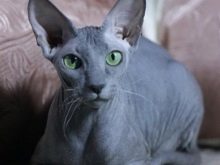
Appearance
Everyone perceives the appearance of animals differently. For some, the sphinx is scary, but for some it seems fantastically sweet. A diverse skin color (black, white, purple, blue) can belong to any kind of sphinxes. Otherwise, all 3 species differ significantly from each other. If you put them together for comparison, the difference will be obvious.

To verify this, we will consider each species separately.
Canadian
Animals are medium in size but weigh more than they appear to be due to dense muscle mass. The head is triangular (wedge-shaped) with clearly defined cheekbones, a flat forehead and a strong chin. Large amber eyes are rounded or slightly elongated, similar in shape to lemons. They have huge, wide ears. The skin is warm, with a light pile, pleasant to the touch. Barrel-shaped body with an oval chest. The limbs are strong, the front legs are shorter than the hind legs. A thin long tail, similar to a whip, with a point at the end.

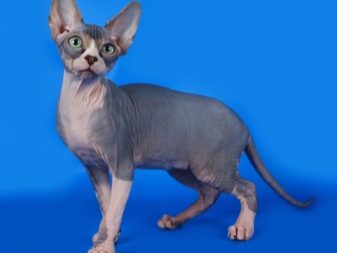
Don
Of the three species, the Don Sphinxes are the most stocky, strong and healthy, with a well-developed skeleton and muscular system.They also have a wedge-shaped head with prominent cheekbones, their muzzle is short, rounded. The eyes are almond-shaped, small or medium, slightly slanting, irises can be of any color. Ears are large and tall, rounded, set wide apart. Active folds are gathered on the face, the mustache is absent or twisted. Donchaks are endowed with a standard or large body with the correct proportions, a noticeable stomach, a straight tail of medium thickness.
The Don and St. Petersburg species of sphinxes have subspecies characterizing different hair cover of animals.
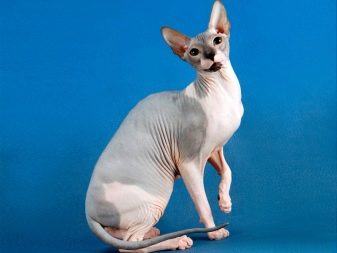
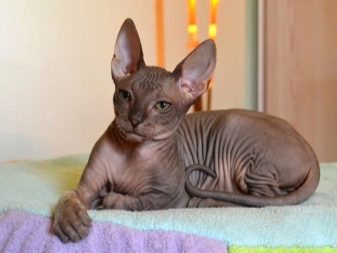
Petersburg
Petersburgers have a lot of similarity with orientals, since they are the basis of the breed. Petersburg sphinxes differ from the rest in grace and elegance. They have a long elongated body, the same limbs and tail, a wedge-shaped head, a characteristic long nose, a flat forehead, a twisted mustache and a thin, with a bend, neck. The slanting almond-shaped eyes are mostly blue or green.

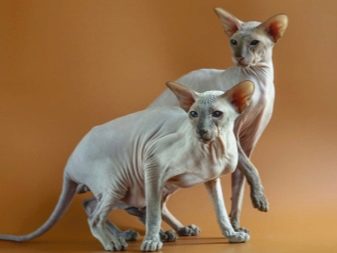
Character
The sphinxes of all three species have much in common in character. They are good-natured, sociable, adore guests. If there are other pets in the house, sphinxes will always find a common language with them and common games. Despite the fact that animals are very attached to people and require attention, they can perfectly entertain themselves by playing with anything.
Sphinxes are curious, energetic and mobile, able to climb to the very ceiling, walk on ledges, make acrobatic jumps. They are intelligent and easy to train. They can be taught to drive the ball, bring things, play hide and seek.
For special affection for the owner, they are called "Velcro." These cats will be on the heels and take part in any work that people do, and sleep at night, hiding in a blanket, together with the owner.
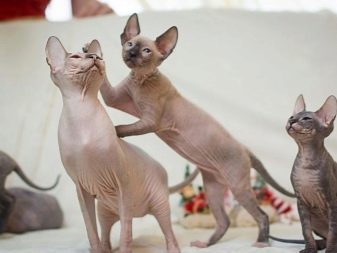
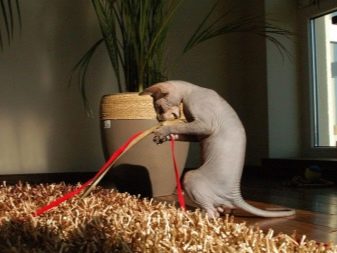
Each breed has slight differences in the nature and behavior of cats. For example, touchiness is almost not peculiar to sphinxes. This quality can only possess Canadians. They must not be scolded or repelled. They will not take revenge, but can be offended, suffer and stop eating.
The Don and St. Petersburg sphinxes are completely devoid of egoism, they are not touchy and even less vengeful. These cats are more energetic than their Canadian counterparts, which are sometimes observed banal laziness.
Petersburg is the most affectionate breed, at any convenient moment such a cat will pick up and ask to be caressed. The most stable and balanced psyche in animals of the Don breed.
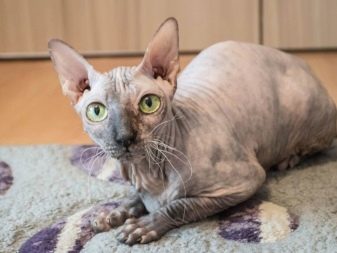
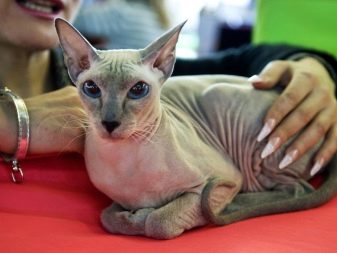
Interesting Facts
When communicating with the sphinxes, you forget that these are cats, they have so much in the character of a logical and reasonable one. People like to watch unique animals, learn interesting facts about them.
- Metabolism in sphinxes is significantly different from all cats. They like to eat tight, but the figure does not suffer. They need enhanced nutrition due to increased heat transfer.
- The body temperature of the animal is 39 degrees, so it seems that they are hot.
- The record life expectancy observed in some individuals was 19 years, but most often cats live 12-15 years.
- The ears of newborn kittens hang down and straighten only by the age of one month.
- Sphinxes love to swim.
- These cats can sunbathe and sweat like humans.
- Before breeding a breed of sphinxes, born occasionally mutated bald kittens, the owners tried to treat for lichen.
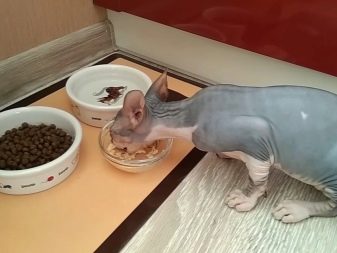
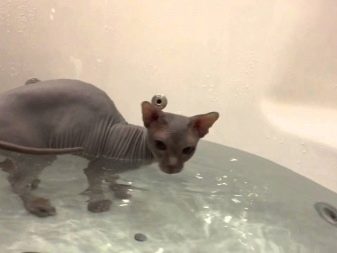
Varieties
We have already found out that the breed of sphinxes has three main lines. This division of naked cats does not end there. At first glance, it seems that the animals do not have hair, in fact they are covered with fluff. According to the variety of pile sphinxes are divided into subspecies: flock, velor, brush. There is another type of breed - holoborn, which have absolutely no hair, not even a cannon. They are called rubber, or plasticine. This subspecies belongs to the Don line. Atypical for sphinxes is a species that has a full hairline, the so-called straight-haired.
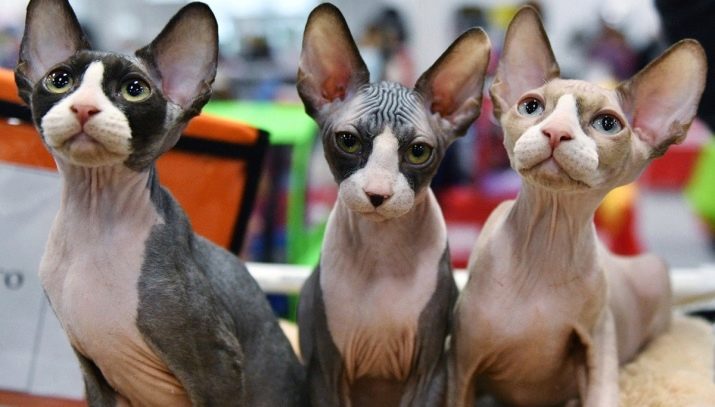
Consider the varieties of wool, which is inherent in the Don Sphinxes and Peterbolds.
The naked
From the name it becomes clear that kittens are born completely without hair, even without a mustache, eyebrows and contact hairs on their legs. The skin of such animals has many folds, it is warm and sticky to the touch. Due to the presence of brown viscous sweat, animals require daily hygiene procedures. Naked babies can be born with open eyes, just like people. Their parchment skin does not yet have the final color, what color the animal will become in adulthood, you can understand by the pads of the legs. Sometimes, by winter, animals overgrow with rare wool, but in the warm period of time it disappears. Large individuals remain without wool throughout the year.
This subspecies is of particular interest to breeders and is highly regarded at exhibitions.
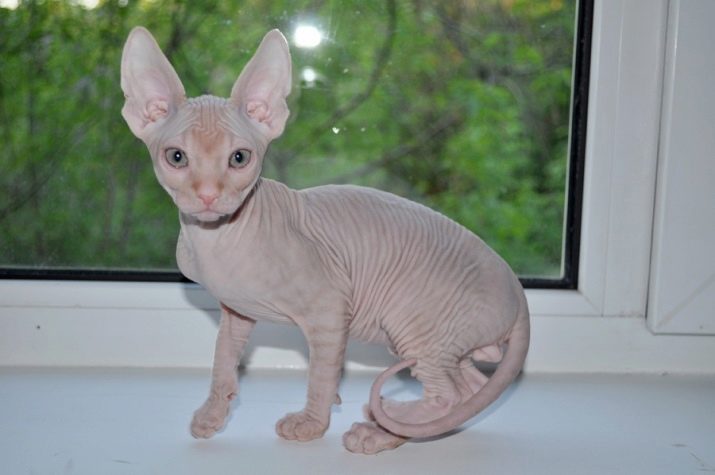
Flock
Kittens, with their gentle fluff, look like velvet peaches. It’s very nice to touch them, like teddy bears. During the first two years after birth, the hairline gradually thinns and disappears, the bulbs completely lose their viability.
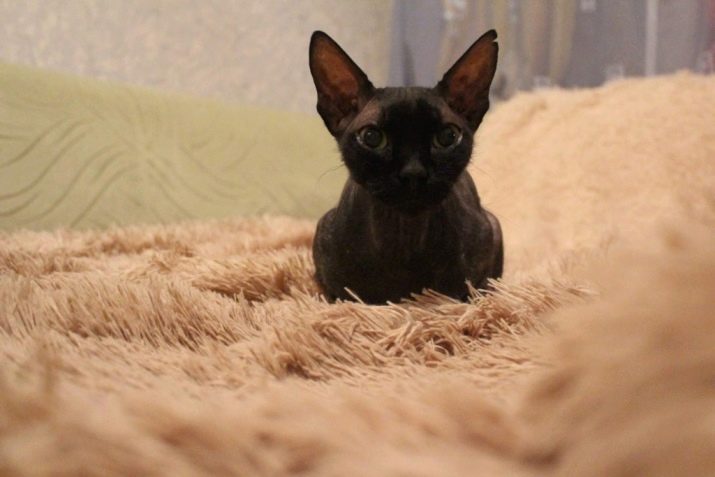
Velours
Kittens visually appear naked, but if you touch them, the villi are even more dense at hand than at the flock. Especially long hairs on the muzzle, tail and extremities, but the crown remains completely bald. Running your hand against the coat, you can see how quickly the thick velvety pile takes its original position.
Velor sphinxes, in turn, are divided into several species that determine the density of the pile.
Light velor has insignificant vegetation with a hair length of 2 millimeters. Most of them are on the paws and not at all on the head. Each kitten has its own hardness.
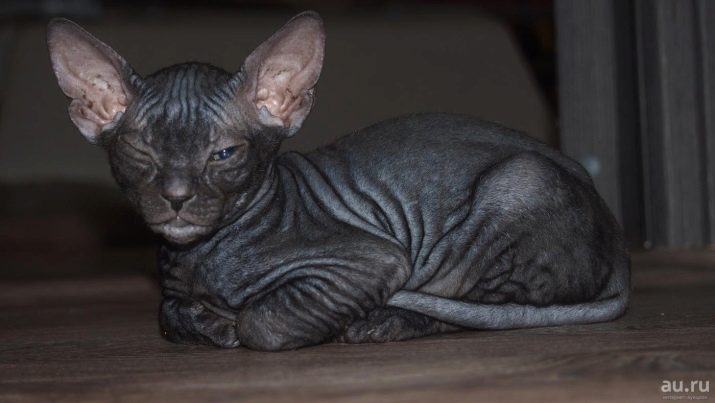
Point - this type of sphinx is endowed with a rather long pile (up to 4 millimeters), which grows in certain places - on the legs, muzzle and tail. By winter, points become especially noticeable.
The downy appearance of velor kittens looks very nice because of the rather long pile, but it is for this reason that they are of little interest to breeders. Cats of this type have beautiful fluffy tails.
Most subspecies of velor sphinxes by the time of puberty are completely bald and only some of them are walking with down on their legs, tail and muzzle.

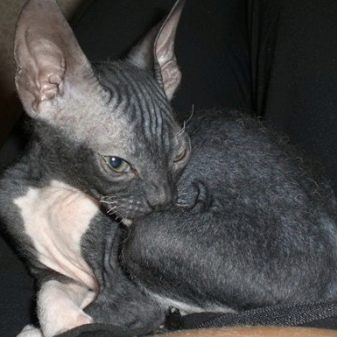
Brush
The coat of animals of this type is really stiff and messy, like the bristles of an old brush. Sometimes vegetation is completely absent on the head, neck, and legs. Breeders are interested in brushes only for the continuation of the population of starving sphinxes. Unfortunately, from two absolutely bald individuals not viable offspring are born. Brashes are used as one of the parents for the appearance of sphinxes of the naked species.
By the age of one and a half years, mild hairs can disappear. Animals endowed with dense hair, through which the skin is not even visible, will wear it until the end of their days.

Straight-haired
Sphinxes have full hair, they do not have a bald gene. The species came from the selection of sphinxes with oriental and Siamese cats. Representatives of this breed repeat the color of cats participating in the selection, their hair is short and tightly attached to the skin in an oriental style.
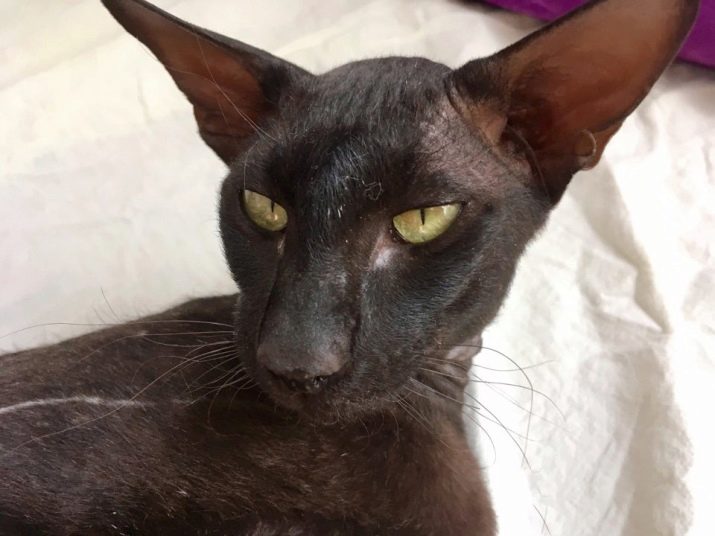
Features of care and maintenance
Bringing a unique animal into the house, one should be prepared to care for it. Sphinxes are not at all capricious, but the absence of hair implies special care for their skin. And the rest of the content of the sphinx is not too different from caring for any other pet.
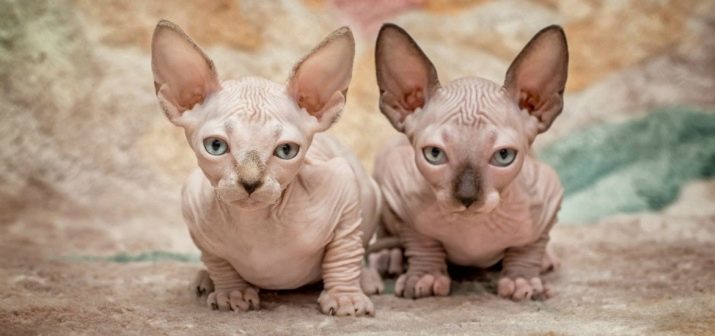
Feeding
Sphinxes are not picky about food, they love everything, the main thing is that there is a lot of food. The owner must regulate the diet of his pet, so that he has enough calories to maintain heat transfer, but there is no excess left in the fat.
For feeding sphinxes, special dry food such as Orijen Cat & Kitten or Royal Canin Sphynx Adult has been developed.
In addition to pet food from the pet store, you can introduce natural products into the diet: beef, turkey (ground) meat, chicken breast (boiled). Raw or boiled vegetables, greens are given several times a week. The menu of sphinxes includes marine fish, eggs, cereals.
Do not feed animals with liver, pork, milk.

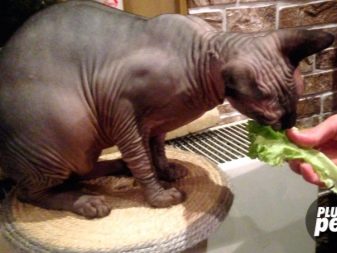
Taming to hands
If the sphinx was only brought into the house, he needs time to adapt. These animals are very affectionate, and when the pet gets used to his hands, he himself will beg for affection.
Standard rules for teaching a kitten to hands have been developed.
- When the kitten eats, it will sleep. This is a convenient moment to carefully pick it up.
- Talking to a kitten in a monotonous gentle voice, they seek his relaxation. At this point, the baby should be slightly stroked behind the ear or along the neck.
- It is easy to lure a pet onto your knees with a treat, and when it starts to be treated, you can pet it lightly, but not hold it by force.
- A kid who likes to play can be lured with a toy on his knees.
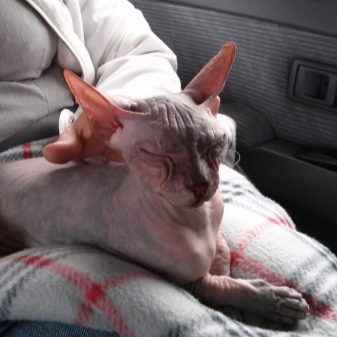
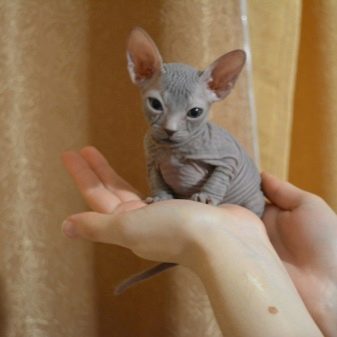
Trained to the tray
Accustoming the sphinx to the tray begins virtually from the first day. When the kitten is very small, put the tray in the place where he lives (sleeps, eats). The filler is needed natural and small, as the baby may taste it. Large granules may not appeal to the small paws, and he will not want to go into the tray.
You should watch the sphinx. If he became worried and began to spin, then he was looking for a place for the toilet, at this moment he was carefully transferred to the tray. Sometimes the baby makes a puddle on the floor. In this case, you need to moisten a little filler in it and put it in the tray. Next time, the kitten will find its toilet by smell.
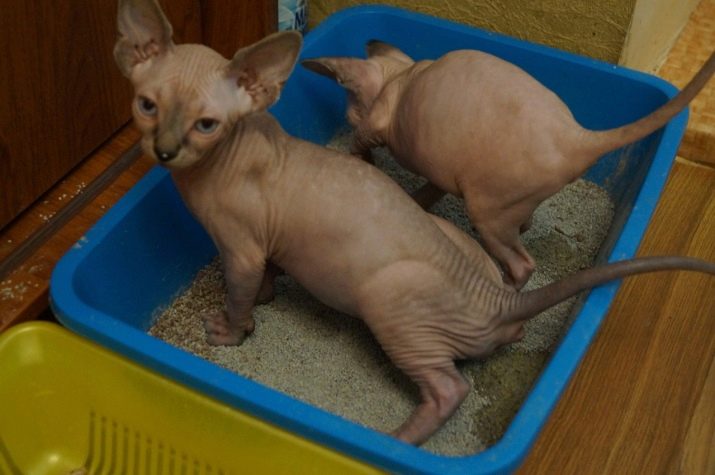
Hygiene
The hairless sphinx sweats with a brown sticky liquid, which should be cleaned daily with special wipes, especially wrinkled skin folds. Once a week, animals are bathed using shampoo for cats.
A dark brown secret is also collected in the ears of the sphinx. It is removed with a cotton swab as it becomes dirty.
The eyes of animals do not have eyelashes that would protect them from dust, but they have gelatinous secretions that collect dust. Excess secretions are removed with a dry or slightly damp gauze disk.
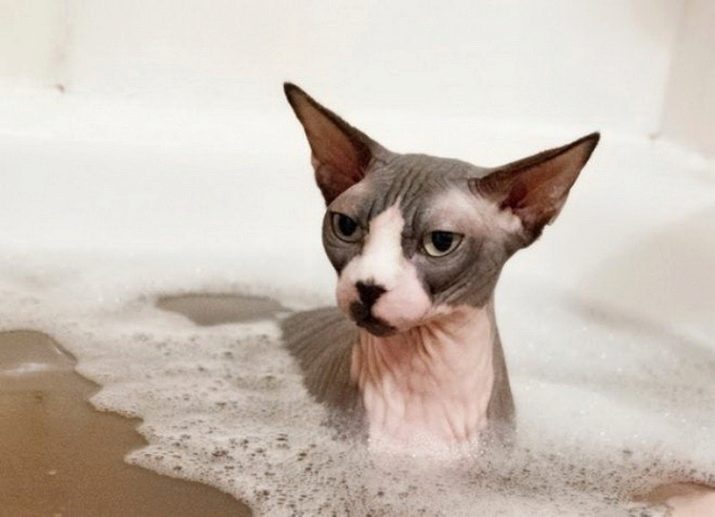
Training
Sphinxes are easy to train, they are intellectuals, moreover, they strive to please the owner. By the age of 8 months, the cat can begin to teach various tricks. The execution of commands is complemented by refreshments. You need to observe what the animal likes. If he likes to run and jump, he can be taught to overcome obstacles on command. It is easy to accustom a cat who carries all sorts of things in his teeth to the “bring” command.
If it is difficult to make contact with a cat, he is aggressive, perhaps he will need castration.

clothing
Sphinxes are afraid of the cold and drafts. In cool apartments and during walks in the fresh air, clothing for cats helps them out. She should be of high quality, soft, made from natural materials. Seams should not press and prevent the animal from moving. The skin of the sphinxes is sensitive, so if they feel discomfort, they will try to tear off their clothes.
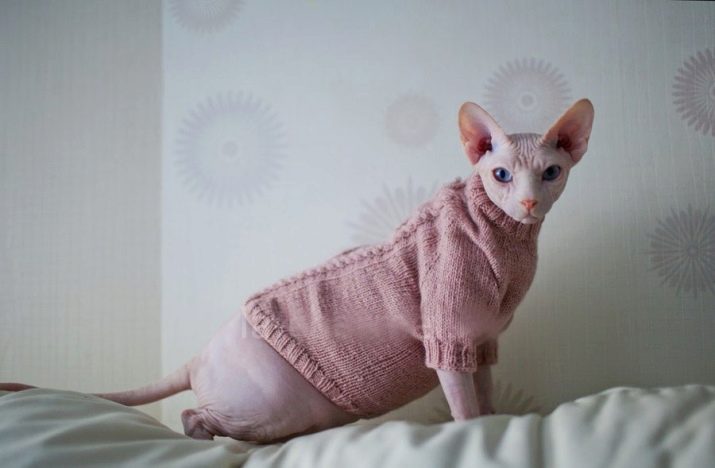
The course of pregnancy and childbirth
Pregnancy in a cat passes within 58-72 days. During this period, she needs care and nutrition according to the advice of a veterinarian. When the time is approaching childbirth, the cat needs to prepare a place, for example, a box with soft bedding. INduring childbirth, especially the first, the cat needs the support of the owners, she often calls them in a loud voice. When the last kitten is born and mother licks them, she should change the litter.
Childbirth in sphinxes is easy and have no problems. Reviews of severe birth processes in cats of this breed are the exception rather than the rule.
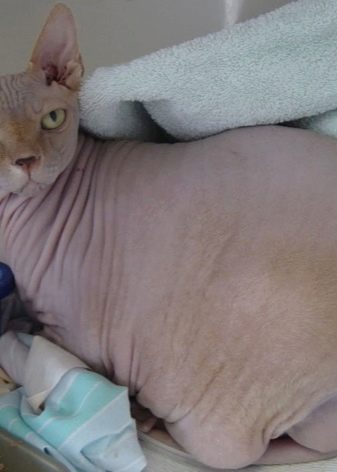
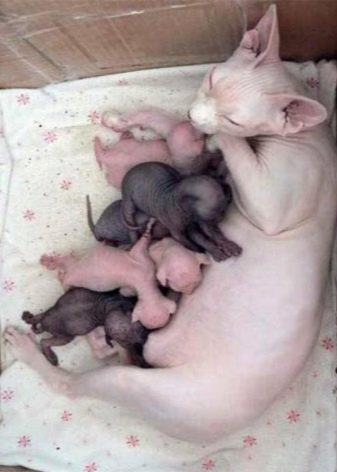
Disease and predisposition to them
Sphinxes have good immunity and are considered a fairly healthy breed, especially the Don line. But due to the lack of wool, being in a draft can lead to colds.
Cats love to sunbathe, but this is often accompanied by burning of the skin, which causes animals to acquire diseases associated with overheating. With poor care, sphinxes also suffer from skin diseases. And if you do not take care of their eyes seriously, they develop conjunctivitis. You need to know the vaccination card and vaccinate your pet on time.
The cat that has given birth may subsequently have problems causing mastitis and cystic seals.
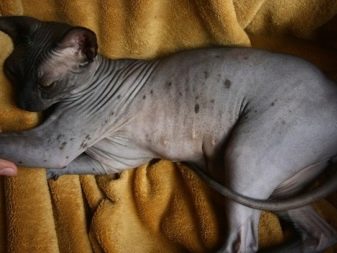
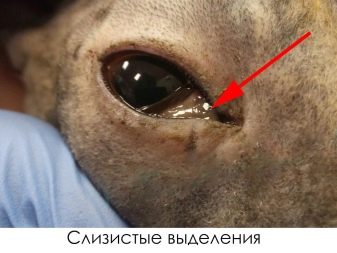
Who will suit?
Sphinxes are suitable for the patient cat lover who does not go on business trips and is often at home. When choosing a sphinx, one should take into account its nature and the requirements of constant attention from the owner. You must also remember that the sphinxes are very active, and for those who want a quiet life, such a cat is not suitable. But if you need a faithful friend and a murmuring “interlocutor” - the sphinxes for these purposes are the most suitable breed.
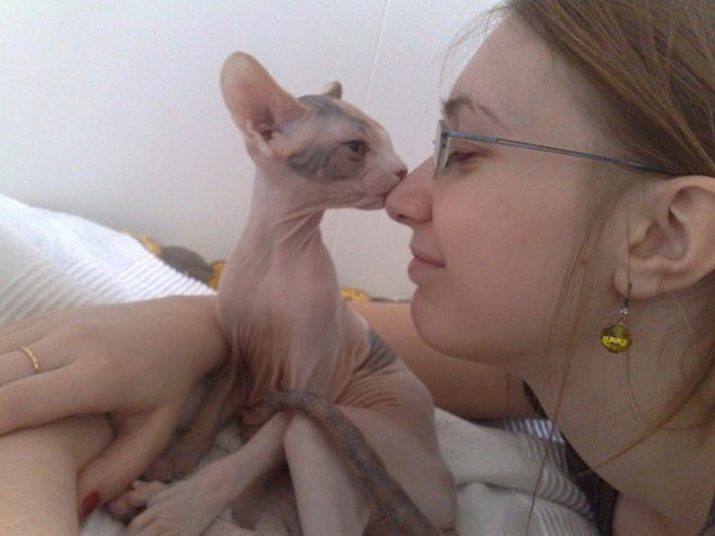
Owner reviews and tips for choosing kittens
According to the owners, this breed is healthy, smart and friendly. Single complaints of serious health problems are associated with a poor choice of kitten. After analyzing the advice of the owners to choose a cat, we can draw the following conclusions.
- When choosing a kitten, you should stroke it. If he is cheerful and fond of - most likely, the baby is healthy.
- The seller should be alert, who will not be interested in who the buyer is and for what purpose he takes the pet. A caring breeder is always worried about the fate of his kittens and how they will care for them.
- It is better to purchase a kitten that is at least 3 months old.
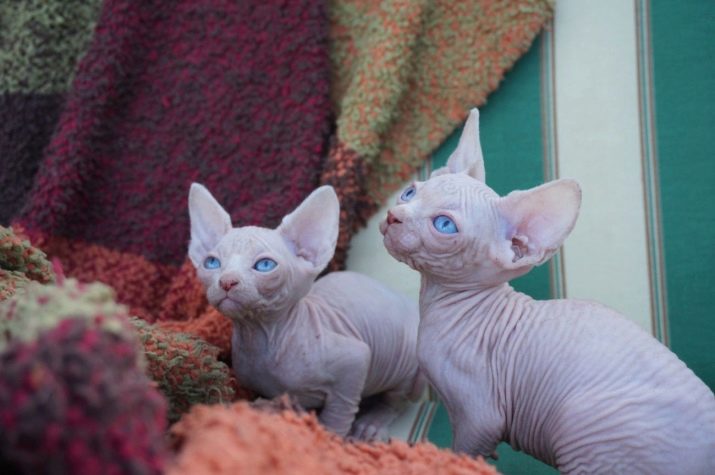
Mysterious sphinxes are not suitable for everyone, but those who chose it as their pets will definitely not be bored.
All about the Sphynx breed, see the next video.
